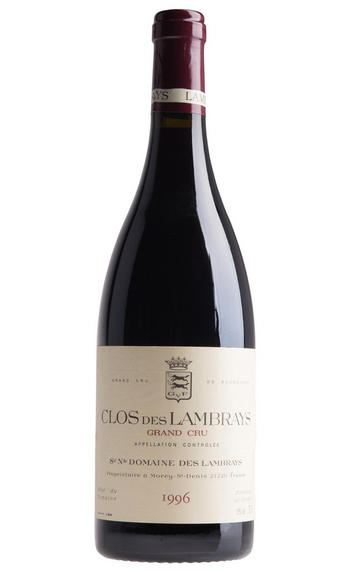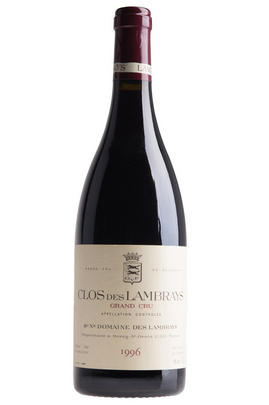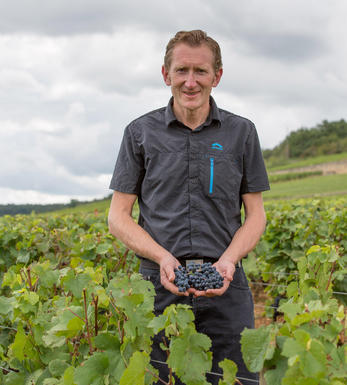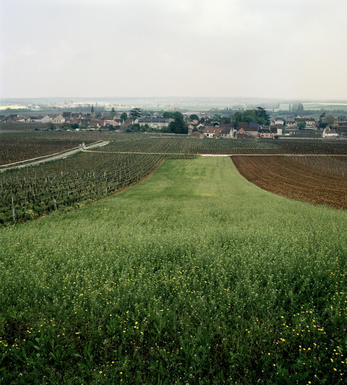
1996 Clos des Lambrays, Grand Cru, Domaine des Lambrays, Burgundy

Critics reviews
The 1996 Clos des Lambrays Grand Cru from Domaine des Lambrays is a wine that I panned when I tasted a magnum in 2018. This bottle was far superior, virtually a different wine. Mature on the nose, and still a little green, it gains complexity and reveals garrigue and star anise aromas, plus touches of burning embers/ash. Fleshy and balanced on the palate with a dash of white pepper, it has a very tertiary finish and feels evolved for a 1996 red Burgundy, yet undoubtedly, this was a far better showing than the previous one.
Drink 2021 - 2037
Neal Martin, Vinous.com (October 2021)
Good medium red. Deep, sappy aromas of cherry, smoke, tobacco and underbrush; very pinot and quite nuanced. A step up in sweetness, concentration and sheer dimension. Sweet game and underbrush notes give this wine a slightly decadent aspect, but this is the soil speaking as the wine is still quite youthful.
A bit less liquoreux than the '95. Thick and silky, but with broad shoulders. Finishes with lovely supple fruit, suave tannins and excellent length. Brouin recommends drinking this wine before the '95, which I retasted next to the '96 and found to be more exotic and a bit more rustic, and still needing time for the acids and tannins to round out.
Stephen Tanzer, Vinous.com (March 1999)
About this WINE

Domaine des Lambrays
Domaine des Lambrays was established in 1363 yet it was only in 1981 that this climat was finally promoted to Grand Cru. The estate was purchased in 1996 by the Freune family and since then dramatic changes have taken place, leading to an upsurge in quality. At 8.8 hectares, this is the largest Grand Cru parcel in Burgundy under one proprietor.
As well as the grand cru itself, the Domaine also owns vines in premier cru and village vineyards in Morey, and since 1993, two premier cru vineyards in Puligny Montrachet, les Folatières and Clos du Cailleret, purchased from Domaine Chartron.
Winemaker Jacques Devauges has been in charge since 1979. The vineyards are run on more or less organic lines, with no chemical anti-rot sprays, and ploughing of the soil by horse. In the cellar, he likes to use the majority of the stems, favours punching down over pumping over, and prefers to restrain the amount of new oak – around 50% for the grand cru. The produce of young vines is downgraded to Morey St Denis 1er cru where it joins the fruit of tiny holdings of La Riotte and Le Village. The village Morey comes from La Riotte, Clos Solon, Les Larreys and especially La Bidaude which lies just above the Clos des Lambrays.
Domaine des Lambrays produces wines which possess balance, power and finesse and which fully live up to their Grand Cru status.
Jasper Morris MW, Burgundy Wine Director and author of the award-winning Inside Burgundy comprehensive handbook.

Morey-Saint-Denis
Morey is sometimes ignored between its two famous neighbours, Chambolle-Musigny and Gevrey-Chambertin, but its wines are of equal class, combining elegance and structure. Morey-St Denis, being that little bit less famous, can often provide excellent value.
The four main Grand Cru vineyards continue in a line from those of Gevrey-Chambertin, with Clos St Denis and Clos de la Roche the most widely available. Clos des Lambrays (almost) and Clos de Tart (entirely) are monopolies of the domains which bear the same names.
Domaine Dujac and Domaine Ponsot also make rare white wines in Morey-St Denis.
- 64 hectares of village Morey-St Denis
- 33 hectares of Premier Cru vineyards (20 in all). Best vineyards include Les Charmes, Les Millandes, Clos de la Bussière, Les Monts Luisants
- 40 hectares of Grand Cru vineyard. Clos de Tart, Clos des Lambrays, Clos de la Roche, Clos St Denis and a tiny part of Bonnes Mares
- Recommended Producers: Dujac, Ponsot, Clos de Tart, Domaine des Lambrays

Pinot Noir
Pinot Noir is probably the most frustrating, and at times infuriating, wine grape in the world. However when it is successful, it can produce some of the most sublime wines known to man. This thin-skinned grape which grows in small, tight bunches performs well on well-drained, deepish limestone based subsoils as are found on Burgundy's Côte d'Or.
Pinot Noir is more susceptible than other varieties to over cropping - concentration and varietal character disappear rapidly if yields are excessive and yields as little as 25hl/ha are the norm for some climats of the Côte d`Or.
Because of the thinness of the skins, Pinot Noir wines are lighter in colour, body and tannins. However the best wines have grip, complexity and an intensity of fruit seldom found in wine from other grapes. Young Pinot Noir can smell almost sweet, redolent with freshly crushed raspberries, cherries and redcurrants. When mature, the best wines develop a sensuous, silky mouth feel with the fruit flavours deepening and gamey "sous-bois" nuances emerging.
The best examples are still found in Burgundy, although Pinot Noir`s key role in Champagne should not be forgotten. It is grown throughout the world with notable success in the Carneros and Russian River Valley districts of California, and the Martinborough and Central Otago regions of New Zealand.


Buying options
Add to wishlist
Description
The 1996 Clos des Lambrays Grand Cru from Domaine des Lambrays is a wine that I panned when I tasted a magnum in 2018. This bottle was far superior, virtually a different wine. Mature on the nose, and still a little green, it gains complexity and reveals garrigue and star anise aromas, plus touches of burning embers/ash. Fleshy and balanced on the palate with a dash of white pepper, it has a very tertiary finish and feels evolved for a 1996 red Burgundy, yet undoubtedly, this was a far better showing than the previous one.
Drink 2021 - 2037
Neal Martin, Vinous.com (October 2021)
wine at a glance
Delivery and quality guarantee